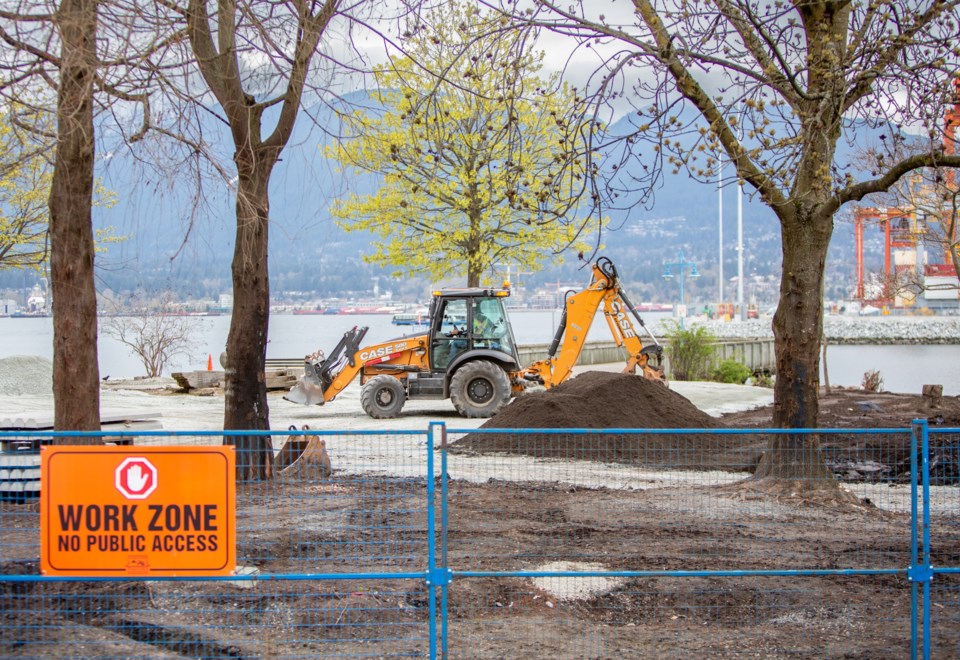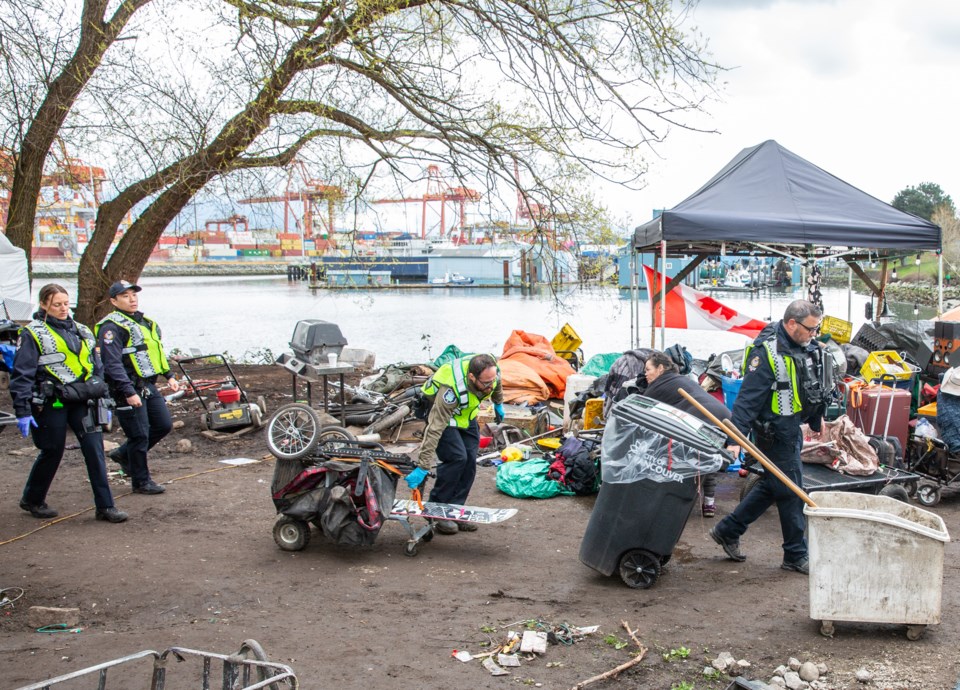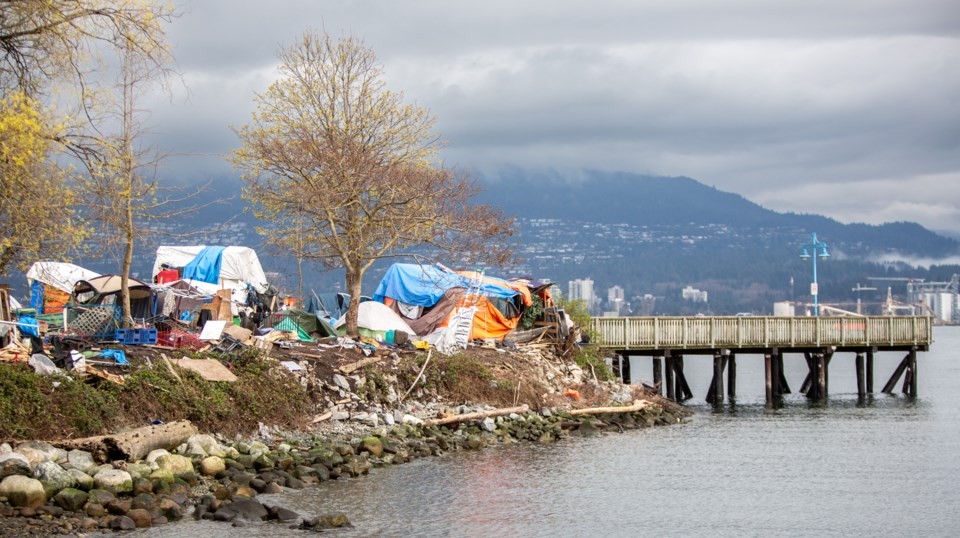A staff report that goes before Vancouver park board commissioners April 8 says there is a growing number of people seeking temporary shelter in parks and public spaces around the city.
The report doesn’t provide statistics but said the “rising” number of people sleeping in tents and in other structures has an impact on all park users and staff mandated to enforce the parks control bylaw.
“When tents and other temporary structures that provide shelter accumulate or remain in place for extended periods of time, they can impact public access to park space and amenities and result in a strain on staffing and resources,” the report said.
A Metro Vancouver homeless count report released in October 2023 said volunteers counted 4,821 people in the region without a home in March 2023. The same report said half of the population (2,420) was counted in Vancouver.
Since that count, BC Housing and City of Vancouver housing officials have repeatedly said more housing and shelter is needed for homeless people, with the construction of social housing not keeping up with the pace of homelessness.
Canada is amid a homelessness crisis, with urban centres such as Vancouver at the regional epicentre, according to the park board report, which highlighted the mental health crisis, the toxic drug supply and deepening poverty as contributing to homelessness.
In recent years, Oppenheimer and Strathcona parks also served as encampments.
The report said for the board to deliver on its mission to provide, preserve and advocate for parks and recreation services to benefit all people, communities and the environment, the parks control bylaw must be updated to recognize needs of all park users, including homeless people.
“The growing number of temporary structures being erected in parks due to homelessness, combined with urban densification, are together putting greater and more complex demands on limited green space,” the report said.

'Lack of understanding'
The report comes as an estimated 30 people who were living in tents and other structures at CRAB Park on the waterfront were set to return Thursday to the section of the park cleaned up over the past week by park board crews.
The section of the park in question — often referred to by staff as the designated or daytime area — is on the peninsula and was targeted by the park board and City of Vancouver because of concerns over debris, garbage, soiled materials, propane tanks, needles, feces and a rat infestation.
While the work was being done, people moved to a temporary sheltering area on a slope adjacent to the fenced-off original encampment. Crews using a front-end loader, backhoe and dump truck completed the cleanup Wednesday.
The designated area was established under a park board general manager’s notice and done as a discretionary measure to specifically accommodate people who were living on the same slope back in 2022.
Three-by-three metre area for tents
The report acknowledged the general manager’s notice and requirements “were not as clear for designated area users as they should be.”
“The lack of understanding by designated area users of the requirements resulted in conditions in the designated area that cause significant tension and conflict when staff seek to respond and manage as part of their delegated responsibilities,” the report said.
Currently, the bylaw allows for people without housing to set up a temporary shelter from dusk to dawn in any park in Vancouver. The bylaw allows one tent per person in a three-metre by three-metre area, with a one-metre minimum between tents.
At CRAB Park, the park board will now allow at least 27 people to return to the cleaned-up area, where there will be no requirement to remove their tents or structures by dawn. Structures, however, are not allowed to be made from construction materials such as wood, pallets or fencing.

'Reduction of conflict'
Amit Gandha, director of parks, told Glacier Media Thursday that the proposed amendments to the parks control bylaw aim to clarify questions around what is permissible regarding sheltering in parks.
“So when people are seeking shelter, they understand where they can shelter and what some of the guidelines are,” Gandha said. “The older bylaw was, in general, vague.”
The definition of a temporary shelter, for example, is a concern addressed in the report.
“The original intent had been to allow for tents and camping canopies,” the report said.
“With the lack of specificity, some members of the public have asserted that tiny structures which can be removed on a trailer, or other built structures would be considered temporary because there is no foundation.”
The proposed update clarifies that the intent is for a camping tent or collapsable camping canopy intended for individual use and capable of being dismantled and carried by one person.
“Staff believe this proposed clarification will aid in people’s understanding of what is allowed and will result in reduction of conflict with operational staff when they seek to enforce the bylaws,” the report added.
The amendments also recommend specifying that no one can set up a tent under the canopy of a tree or within seven metres of a beach, pond, lake, dock, cliff or steep slope. Safety is cited in both amendments.
“We have recently seen a situation in Vancouver when a sheltering structure positioned under a tree caught fire,” the staff report said. “The fire quickly engulfed the tree, putting the person, the tree and the adjacent canopy at very high risk.”
'Dystopian parking lot-style encampment'
As for CRAB Park, Gandha said the goal is to work with residents to keep the area clean, safe and in compliance with the bylaw. In the meantime, he said, BC Housing and the city will continue to reach out to encampment residents in efforts to move them indoors.
Advocates acting on behalf of CRAB Park residents issued a news release Thursday, saying the new arrangement at the park amounts to “a dystopian parking lot-style encampment, with a gravelled base and almost-touching parking spots.”
The release included a quote from a resident identified only as T.
“The tents are really cramped and close together,” T said. “There are so many reasons why it’s a problem. One of them is that a lot of people have anxiety and PTSD and don’t want to be so close to their neighbours. And I don’t want to keep my dog in a 10x10 space.”
The advocates again recommended the City of Vancouver lease a neighbouring vacant parking lot adjacent to the encampment from the Vancouver Port Authority and turn it into a tiny home village.
They say the park board has declined to include access to water and electricity on the new site, which are concerns outlined in an ongoing Human Rights complaint launched by residents.



